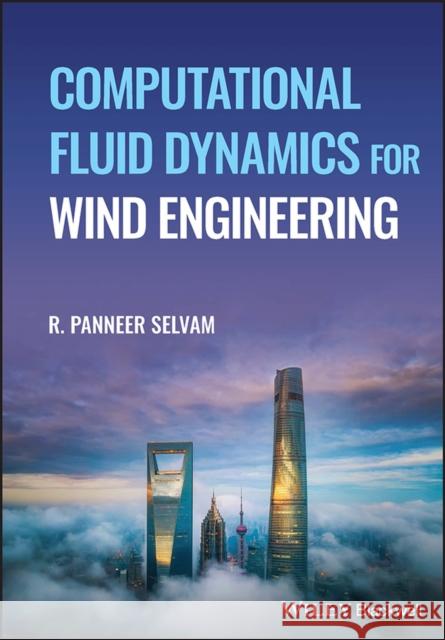Computational Fluid Dynamics for Wind Engineering » książka



Computational Fluid Dynamics for Wind Engineering
ISBN-13: 9781119845058 / Angielski / Twarda / 2022 / 272 str.
Computational Fluid Dynamics for Wind Engineering
ISBN-13: 9781119845058 / Angielski / Twarda / 2022 / 272 str.
(netto: 484,11 VAT: 5%)
Najniższa cena z 30 dni: 503,12 zł
ok. 30 dni roboczych
Bez gwarancji dostawy przed świętami
Darmowa dostawa!
Preface1 Introduction1.1 Brief Review of Steps in CFD Modeling1.2 CFD for Wind Engineering2 Introduction to Fluid Mechanics2.1 Navier-Stokes Equations2.2 Governing Equations for Compressible Newtonian Flow2.3 Definition of Convection and Diffusion2.4 Derivation of Bernoulli Equations2.5 Velocity Computation in an Incompressible, Irrotational, Steady and Inviscid Flow2.6 Non-dimensional NS Equations2.7 Properties of Fluids2.7.1 Properties of Air2.7.2 Change in Velocity to Change in Energy2.7.3 Change in Temperature to Change in Energy2.8 Solution of Linear and Nonlinear Equations2.9 Laminar and Turbulence Flow2.10 Velocity Spectrum & Spectrum Considered by Different Turbulence Models2.11 Turbulence Modeling2.12 Law of the Wall2.13 Boundary Layer Depth Estimation2.14 Chapter OutcomeProblemsReferences3 Finite Difference Method3.1 Introduction to Finite Difference Method3.2 Example for 2D Potential Problem and Solution of Simultaneous Equations-Direct & Iterative Methods3.3 Finite Difference Method of Approximating the Partial Differential Equation3.3.1 Introduction to Finite Difference Method3.3.2 Physical Problem and Modeling3.3.3 Direct Method of Solution3.3.4 Memory Requirements for a 100x100 Mesh3.3.5 Iterative Method by Gauss-Siedel (GS) or Successive Over Relaxation (SOR)3.3.6 Details of Program Pcham.f3.3.7 Optimum Relaxation Parameter RF for SOR3.3.8 Inviscid Flow Over a Square Cylinder or Building3.3.9 Iterative Solvers Used in Practical Applications3.4 Unsteady Problem-Explicit and Implicit Solution for the Wave Equation3.4.1 Discretization of the Wave Equation by Different FDM Schemes3.4.2 Input Preparation3.4.3 Information Needed to Solve Unsteady Problems3.5 Solution of the Incompressible Navier-Stokes (NS) Equations3.6 Storage of Variables in Staggered and Non-Staggered Grid Systems3.7 Node and Cell-Centered Storage Locations3.8 Structured and Unstructured Grid Systems3.9 Variable Storage Methods3.10 Practical Comments for Solving the NS equation3.11 Chapter OutcomeProblemsReferences4 Introduction to Wind Engineering4.1 Wind Velocity Profile Due to Ground Roughness and Height4.1.1 Wind Velocity with Height4.2 Topographic Effect on Wind Speed4.3 Wind Speed and Wind Pressure4.4 Wind and Structure Interaction4.4.1 Shape effect4.4.2 Structural Dynamic Effect in the Along Wind Direction4.4.3 Structural Dynamic Effect in the Across Wind Direction4.5 Opening in the Building4.6 Phenomena not Considered by the ASCE 7-164.7 ASCE 7-16 on Method of Calculating Wind LoadProblemsReferences5 CFD for Turbulent Flow5.1 Mean and Peak Pressure Coefficients from ASCE 7-16 and Need for CFD5.2 Procedure for CFD Modeling5.3 Need for Non-dimensional Flow Modeling5.4 Flow Over 2D Building & Flow Over an Escarpment5.5 Pressure on the Texas Tech University (TTU) Building Without Inflow Turbulence5.5.1 Mathematical & Numerical Modeling5.5.2 Detail of the TTU Building and the Computational Region5.5.3 Grid Generation5.5.4 Time Step and Total Time to Run5.5.5 Details of Program yif2.f5.5.6 Files Needed to Run the Program5.5.7 Input Data File-yif-i.txt5.5.8 Output Detail5.5.9 Screen-Writing5.5.10 File Detail: yif-o.plt5.5.11 File Detail: yif-o2.plt5.5.12 File Detail: yif-o3.plt5.5.13 File Detail: yif-p.plt5.5.14 File Detail: prcon.plt5.6 Unsteady Flow over Building5.6.1 Pressure on the TTU Building with Inflow Turbulence5.6.2 Inflow Turbulence Generation Methods5.6.3 Inflow Turbulence Effect on Flow and Pressure without Building5.6.4 Computation of Wind Spectrum Using the Program yif2.f5.6.5 Peak Pressure on TTU Building Using Inflow Turbulence5.7 Flow Around a Cylinder and Practical Relevance to Bridge Aerodynamics5.8 Chapter OutcomeProblemsReferences6 Advanced Topics6.1 Grid Generation for Practical Applications6.1.1 Flow Around Complex Building and Bridge Shapes6.2 Structural Aeroelasticity and Structural Dynamics6.2.1 Fluid Structure Interaction (FSI) Methods6.2.2 Moving Grid for FSI Computation6.2.3 Vortex Shedding6.2.4 Galloping of a Rectangular Cylinder6.2.5 Bridge Aerodynamics6.2.5.1 Fixed Bridge Computation6.2.5.2 Movable Bridge Computation for Critical Flutter Velocity Using Moving Bridge6.2.5.3 Estimation of Negative Damping Coefficient of a Bridge Considering the Response as a Free Vibration6.3 Inflow Turbulence by Body Forcing6.4 CFD for Improving Wind Turbine Performance and Siting and Wind Tunnel Design6.4.1 Actuator Disc Method (ADM)6.4.2 Actuator Line Method (ALM)6.4.3 Multiple Reference Frame6.4.4 Sliding Mesh Model or Rigid Body Motion Model6.4.5 Wind Tunnel Flow Modeling and Design6.4.6 Improving Wind Turbine Performance6.5 Tornado-Structure Interaction6.5.1 Tornado Models for Engineering Applications6.5.2 Analytical Vortex Model6.5.3 Vortex Generation Chamber Models6.5.3.1 Stationary Vortex Chamber6.5.3.2 Moving Vortex Chamber6.6 Wind Environment Around Buildings6.7 Pollutant Transport Around Buildings6.8 Parallel Computing for Wind Engineering6.9 Chapter OutcomeProblemsReferences7 Introduction to OpenFOAM Application to Wind Engineering7.1 Introduction to OpenFOAM and ParaView for Wind Engineering7.1.1 OpenFOAM for Wind Engineering7.1.2 Grid Generation7.1.3 Visualization7.2 Installation of OpenFOAM, ParaView and Running a Sample File7.2.1 Installation of OpenFOAM and ParaView7.2.2 Running a Problem Using OpenFOAM7.3 CFD Solvers and Explanation of Input File for Flow Around a Cube7.3.1 Numerical Schemes and Solvers for the NS equation7.3.2 Flow Around a Cube Using Uniform Inflow7.3.3 Detail of 'constant' Directory7.3.4 Detail of '0' Directory7.3.5 Grid Generation Using blockMesh7.3.6 Detail of 'fvSchemes' File7.3.7 Detail of 'fvSolution' File7.3.8 Detail of 'controlDict' File7.3.9 Time Variation of Data7.3.10 Space Data Retrieval from ParaView7.4 Visualization Using ParaView7.5 Analysis of Flow Over Cube Data for Uniform Flow at the Inlet7.6 Computation of Turbulent Flow Over a Cube7.6.1 Detail of 'constant' Directory7.6.2 Detail of 'system' Directory7.6.3 Inflow Details7.7 Multilevel Mesh Resolution Using snappyHexMesh Mesh Generator in OpenFOAM7.8 Challenges in Using OpenFOAM7.9 Summary and Conclusions7.10 Chapter OutcomeProblemsReferencesAppendicesA.1 Tecplot for VisualizationA.2 Random Process for Wind EngineeringReferencesA.3 Direct Solution of Ax=b by A-1
R. Panneer Selvam is University Professor and holds the James T. Womble Endowed Professorship in Computational Mechanics and Nanotechnology Modelling in the Department of Civil Engineering at the University of Arkansas. His research interests include structural analysis, structural loading, finite element methods in civil engineering, numerical modelling of linear, nonlinear, and dynamic behaviour in structural mechanics, and fluid dynamics and acoustics using boundary element, finite element, and finite difference methods. He is also interested in computer modeling in wind engineering, understanding turbulent flow, thermal energy storage, thermal management for electronics, and fluid-structure interaction problems.
1997-2025 DolnySlask.com Agencja Internetowa
KrainaKsiazek.PL - Księgarnia Internetowa









